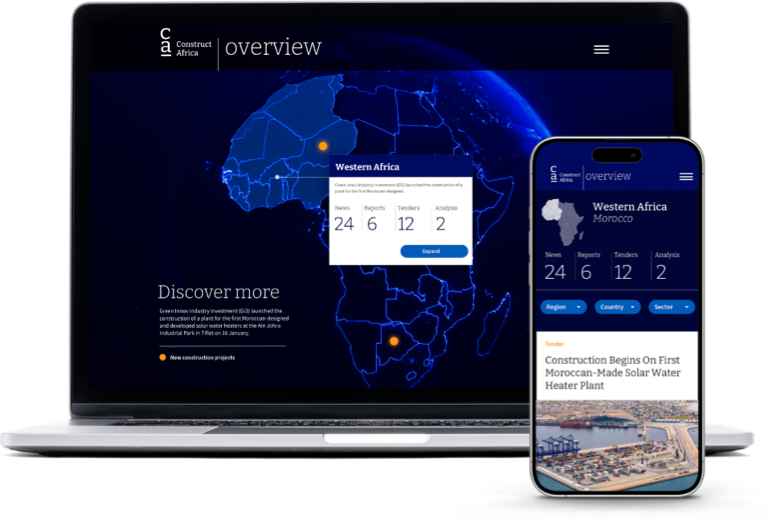Lekki-Ikoyi Cable-Stayed Bridge, Lagos, Nigeria
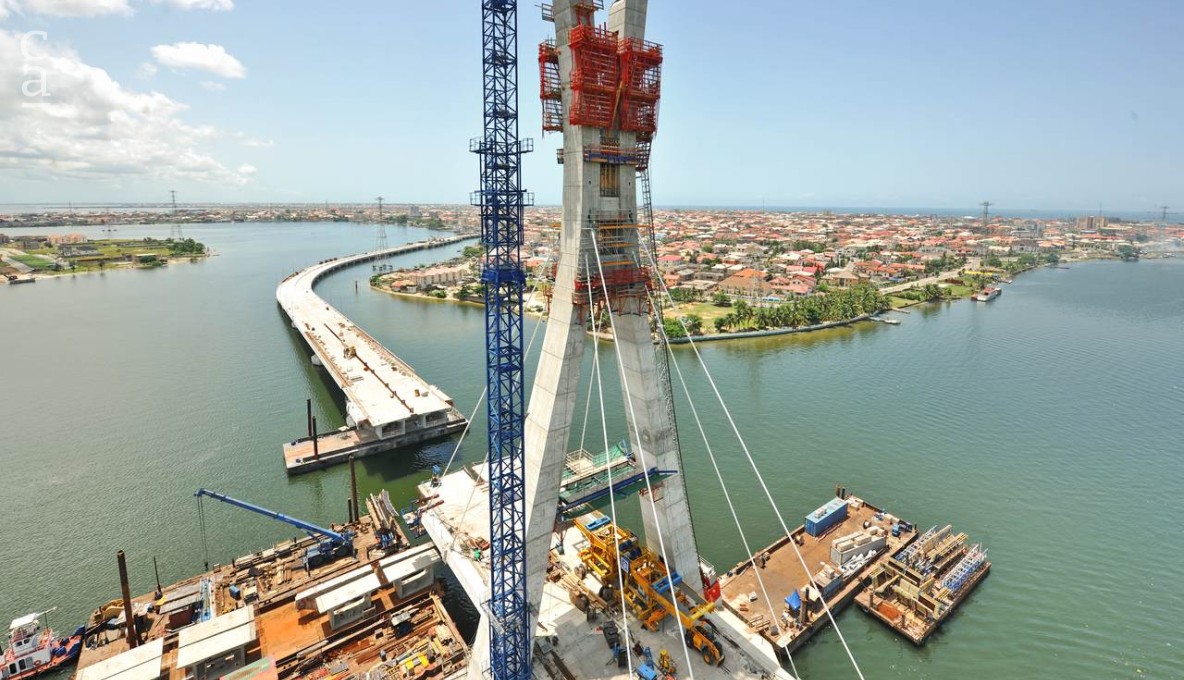
Lekki-Ikoyi Cable-Stayed Bridge, Lagos, Nigeria
The 1.36 km Lekki-Ikoyi bridge in Lagos Nigeria connects the Lekki and Ikoyi districts of Lagos, and is the 1st cable-stayed bridge in West Africa. A cable-stayed bridge is a bridge whose deck is supported by cables running directly from the tower (or pylon) to the deck, forming a fan-like pattern or a series of parallel lines.
The Lekki-Ikoyi bridge was designed and constructed by the construction firm Julius Berger and is characterized by an impressive 90m high pylon in the middle which supports the adjacent bridge spans through inclined steel cables. Built at a cost of N29billion (approx. US$195million), construction work on the bridge started in May 2009 and it was commissioned and opened to the public four years later in May 2013. The bridge has two principal parts: a 722-metre long full ‘span approach bridge’ on the Lekki side located just above water level and a 635-metre long cable-stayed bridge with a precast structure called the ‘main bridge’. The main bridge provides a 9-metre headroom above water level to allow for maritime traffic. The bridge is a toll bridge and its use is restricted to private and commercial vehicles with a total seating capacity not exceeding 26 people.
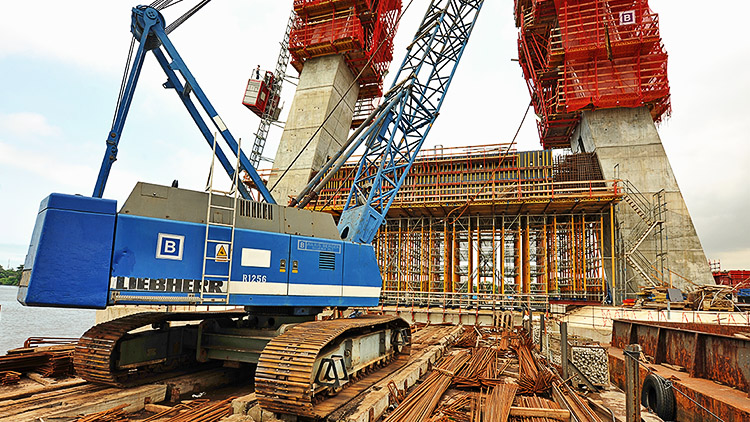
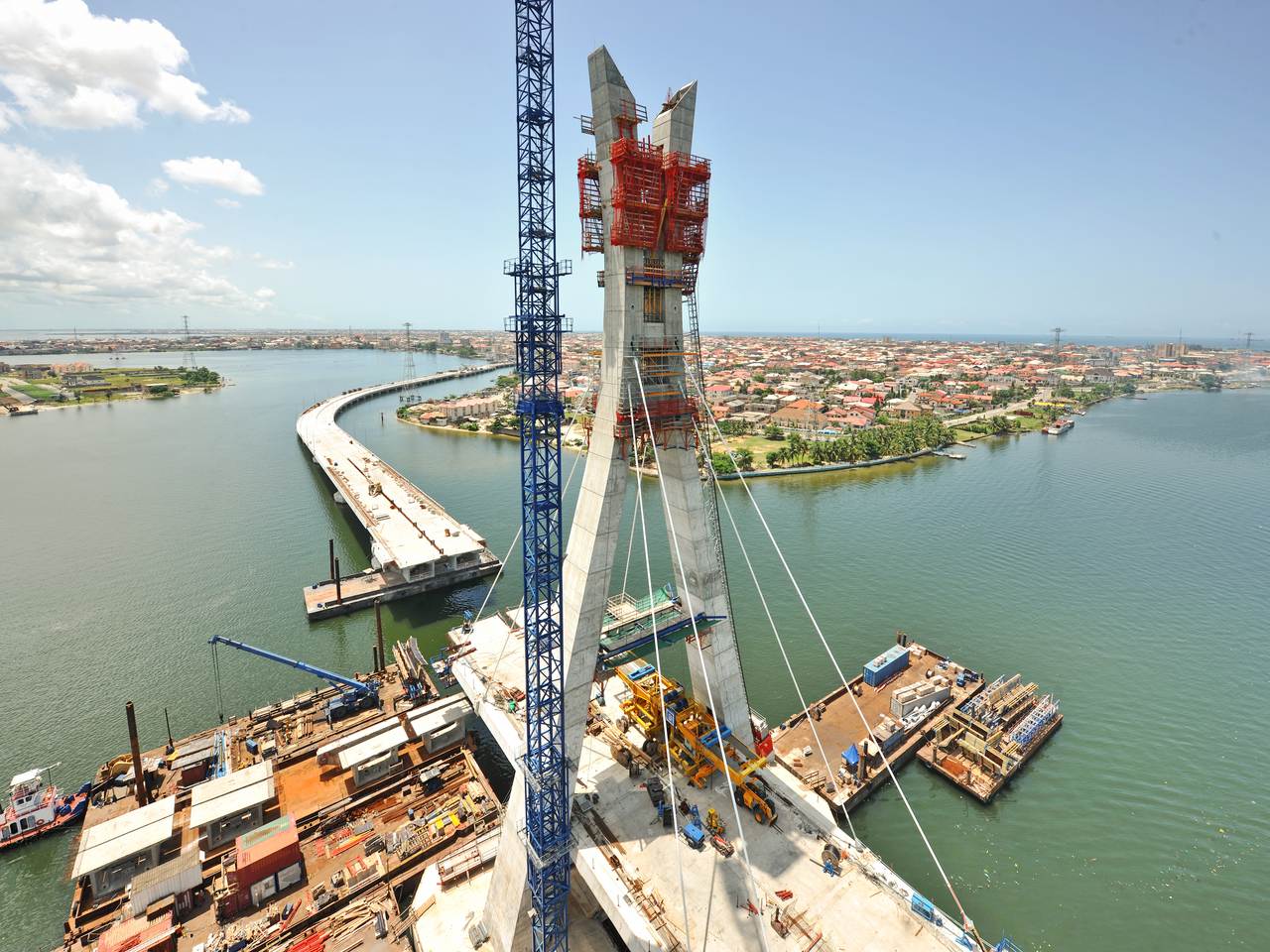
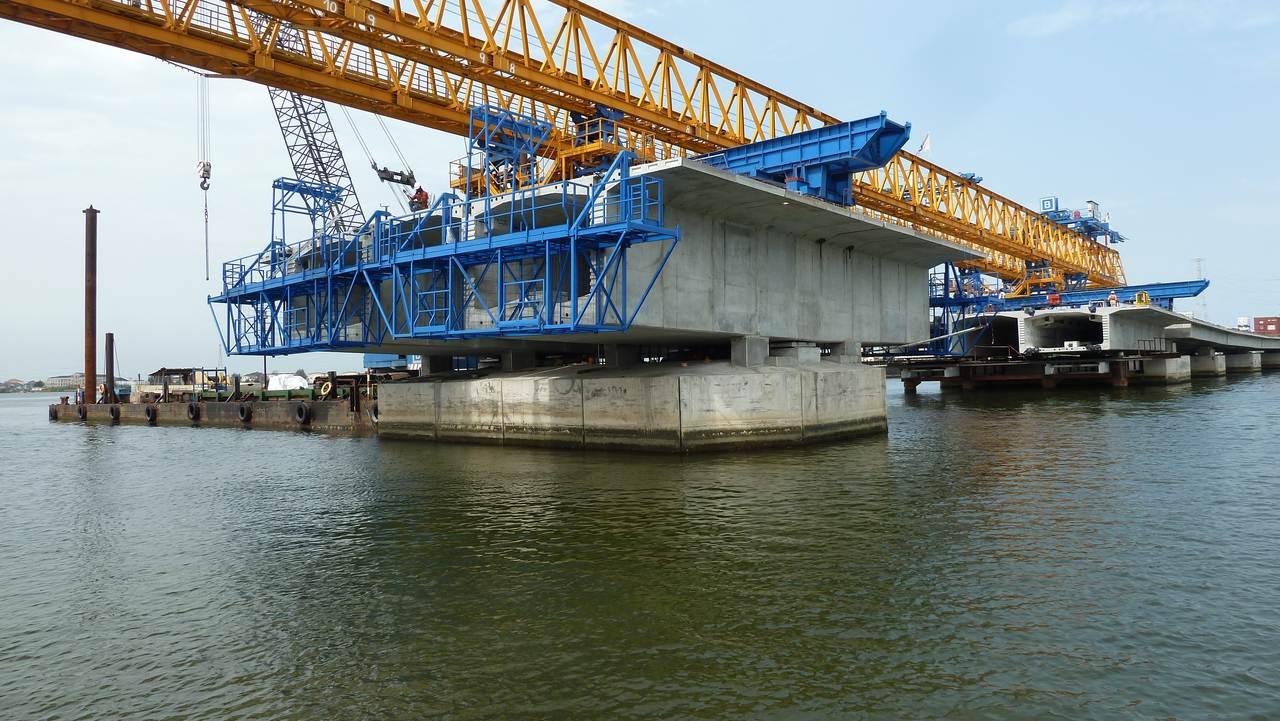
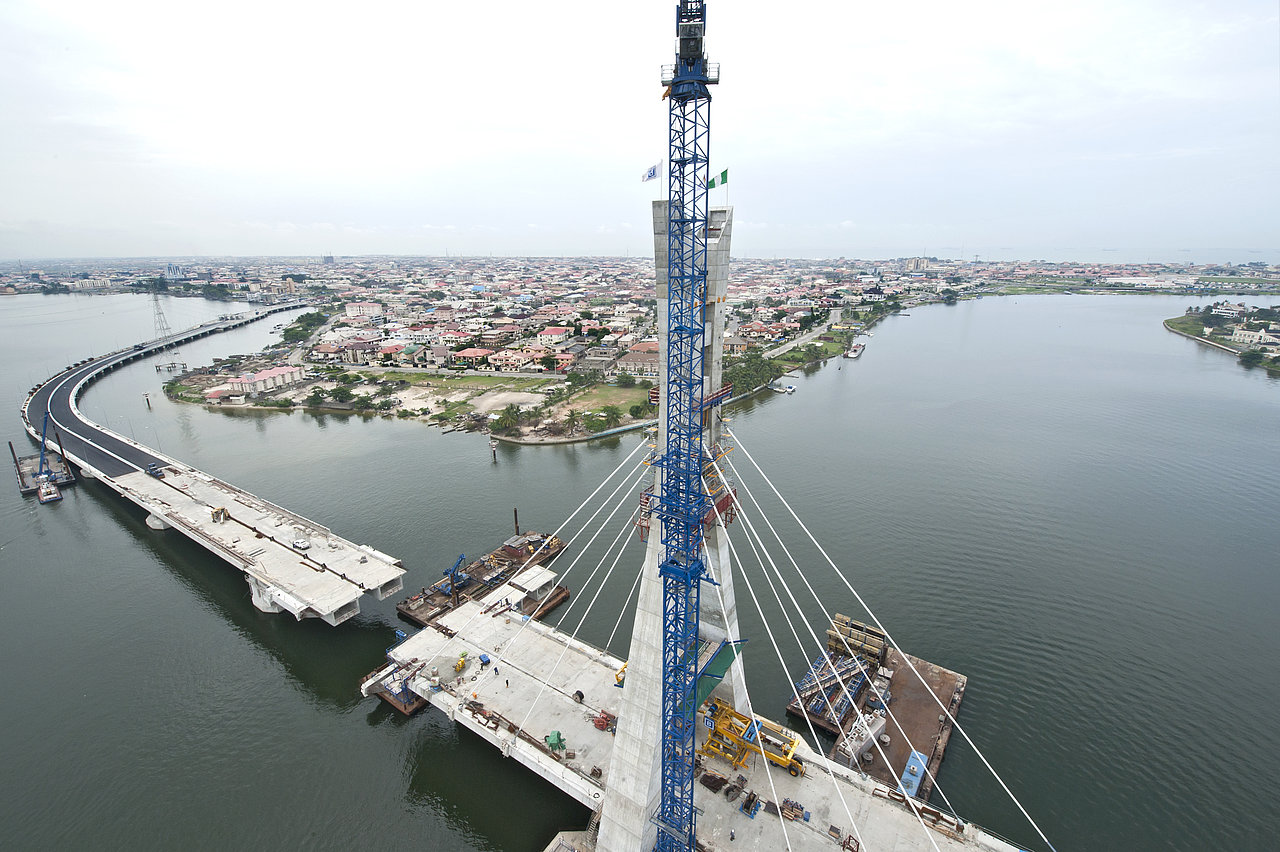
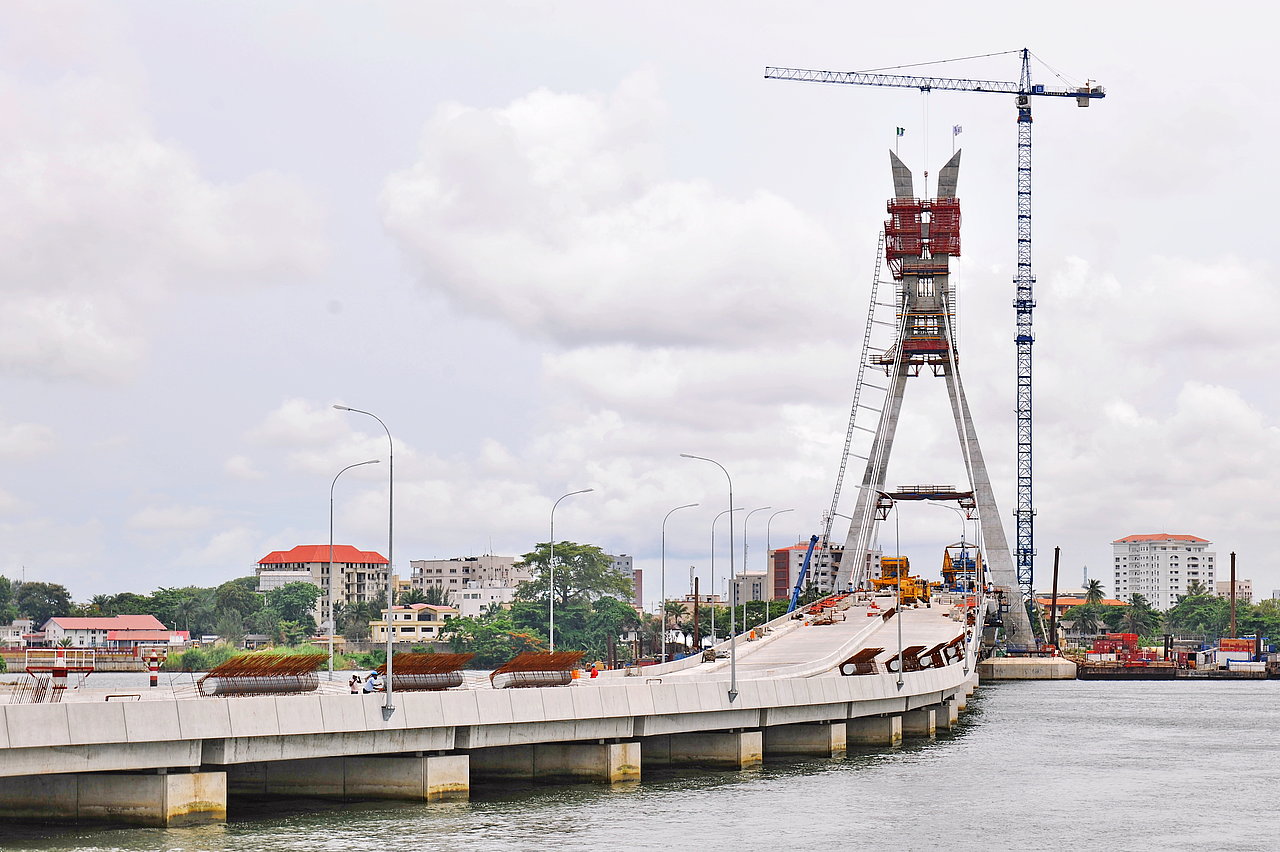
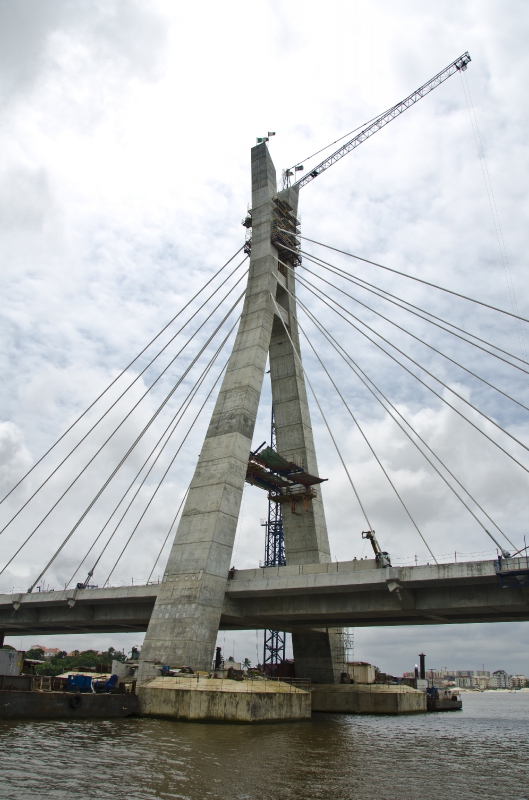
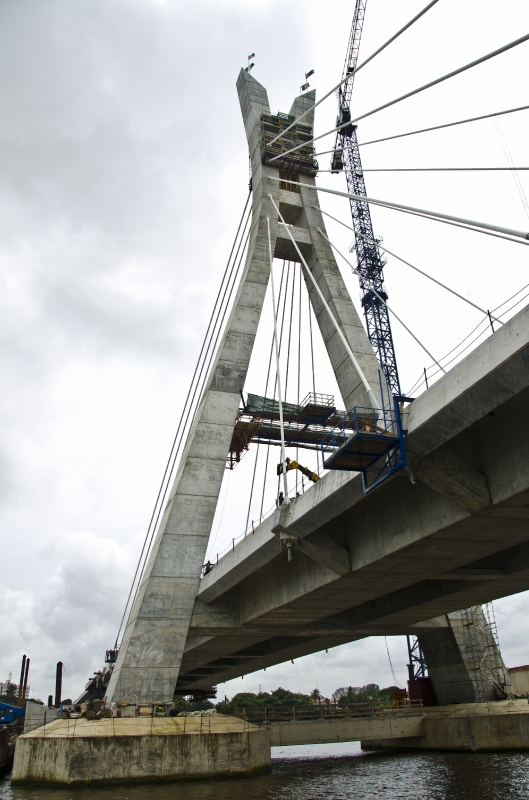
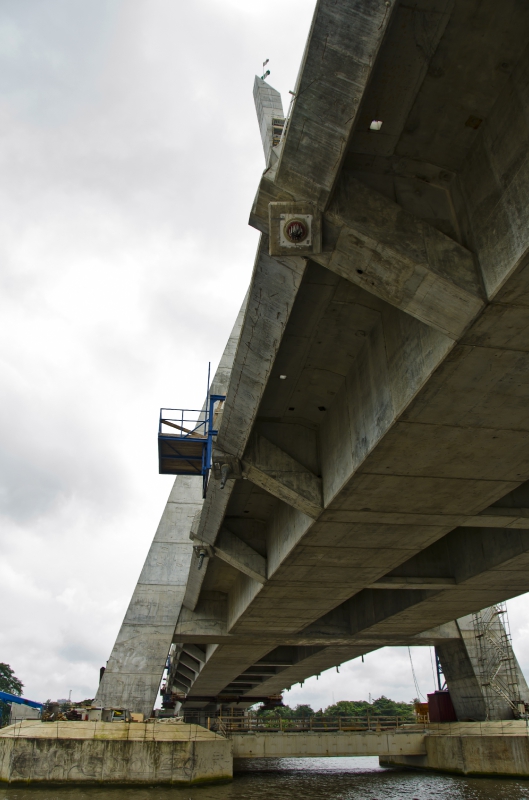
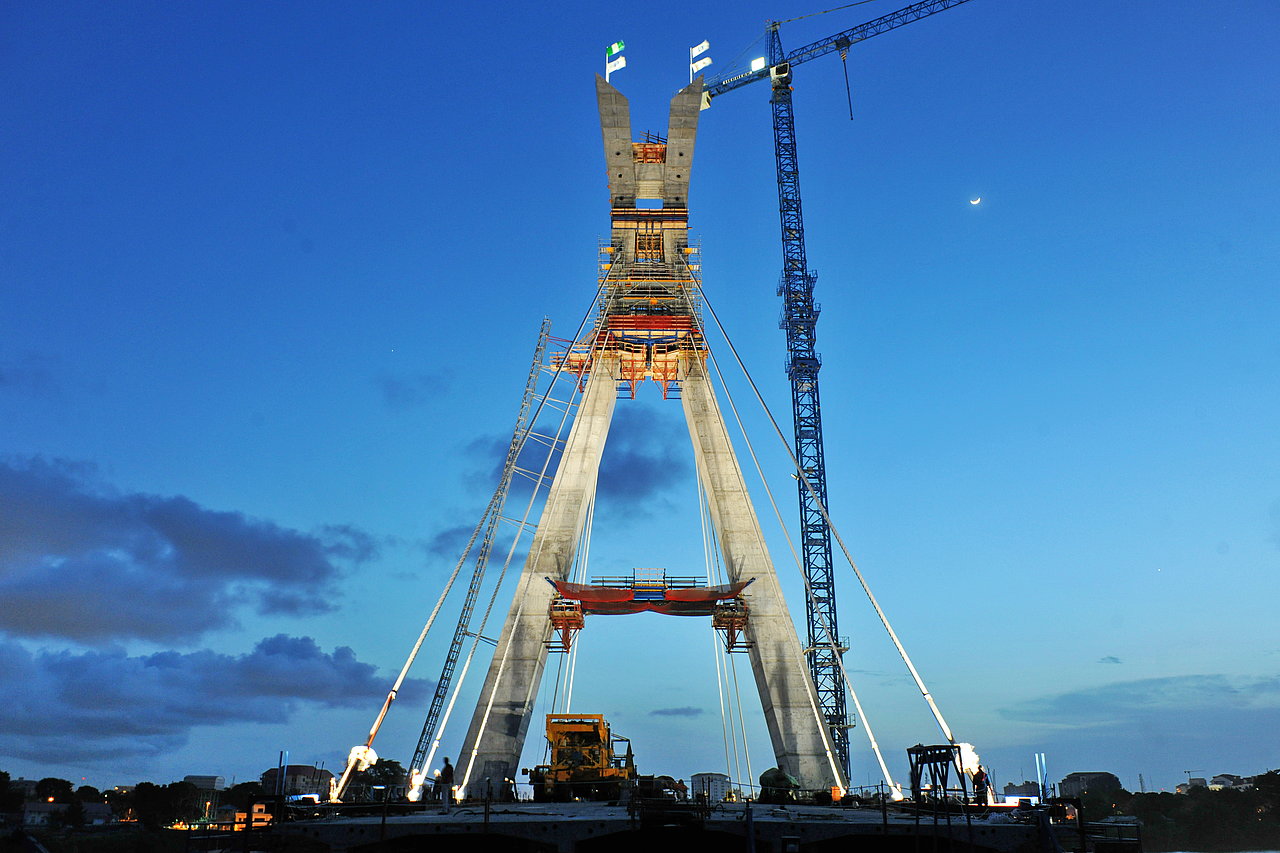

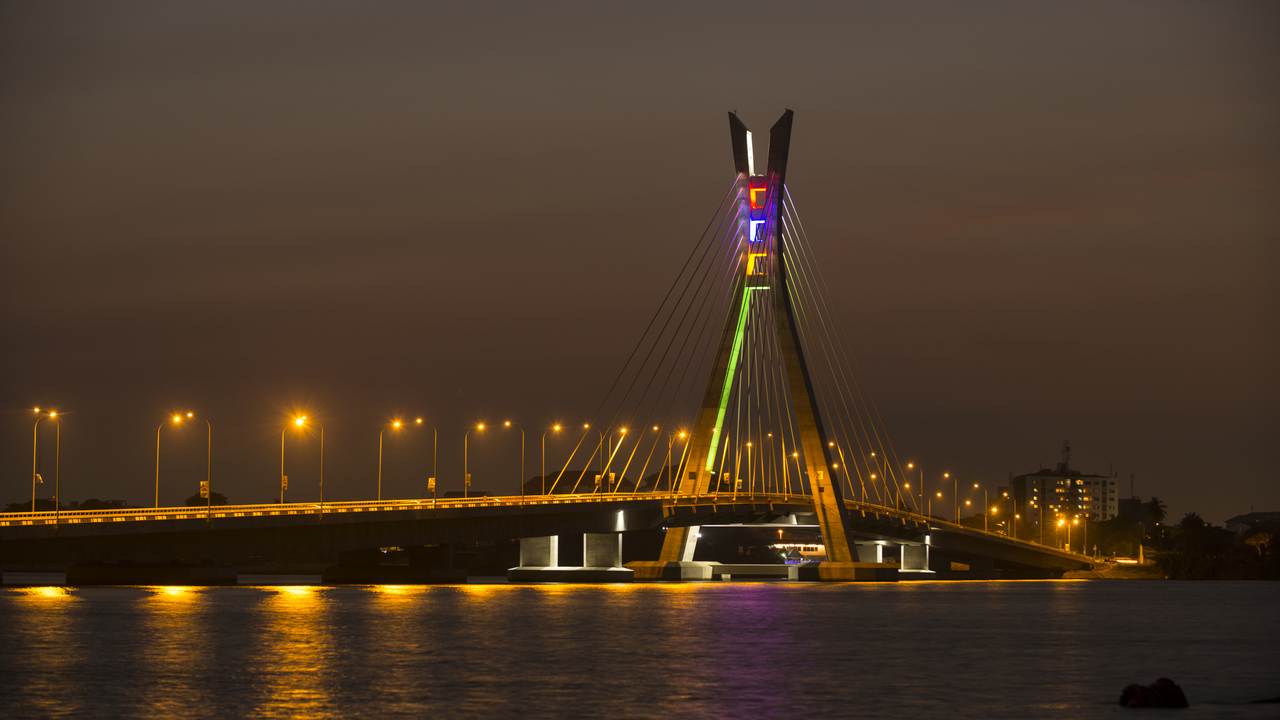
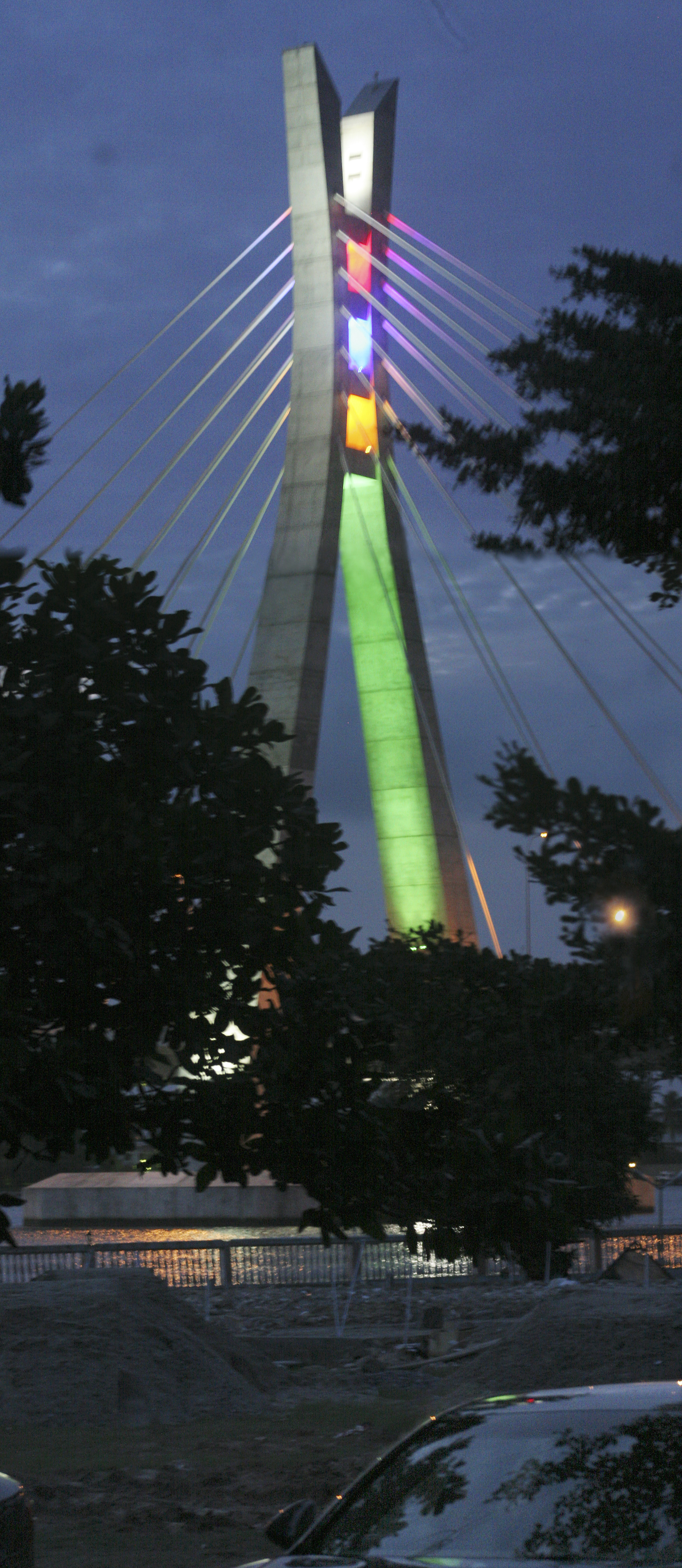
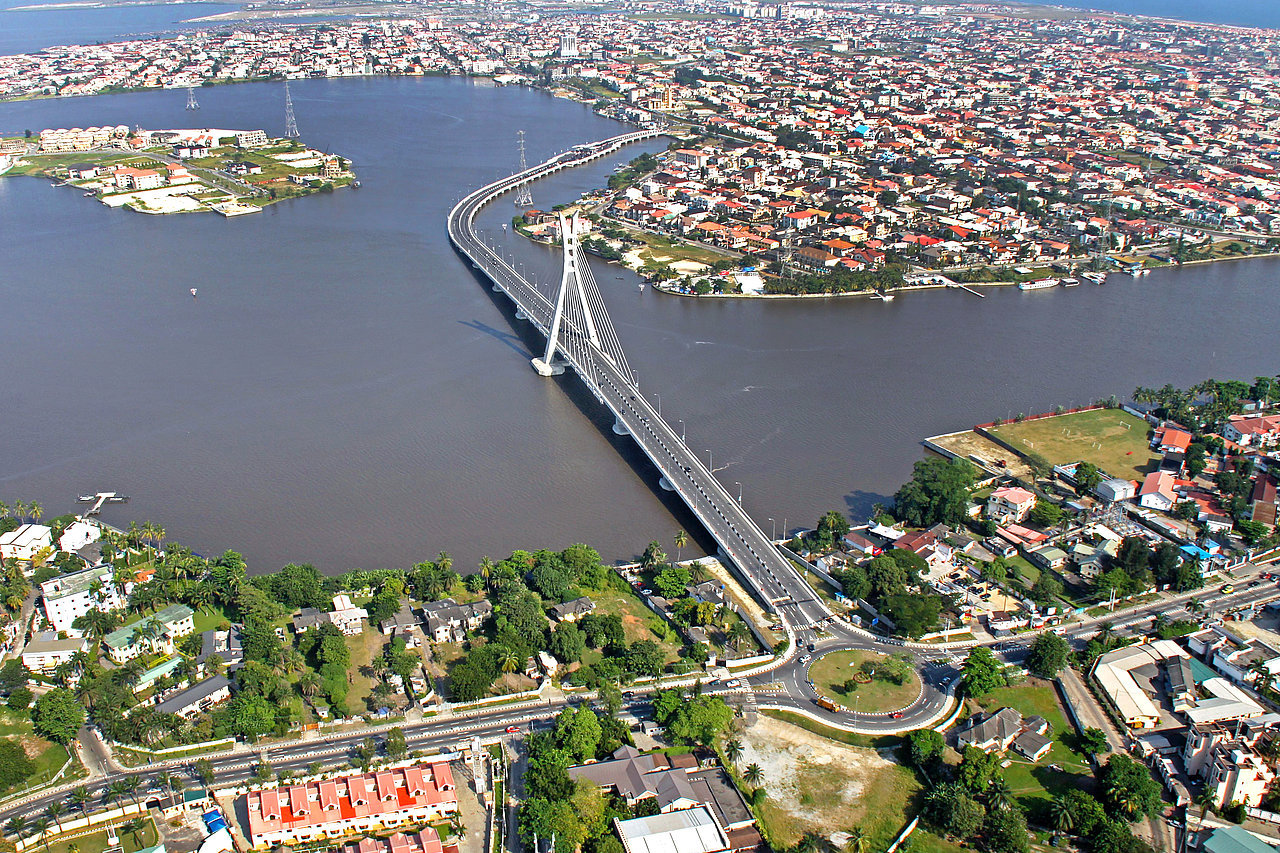
Discover
myConstructAfrica
Your one-stop-shop for information and actionable intelligence on the construction and infrastructure pipeline in African countries
- News, analysis and commentary to keep up-to-date with the construction landscape in Africa.
- Industry Reports providing strategic competitive intelligence on construction markets in African countries for analysts and decision-makers.
- Pipeline Platform tracking construction and infrastructure project opportunities across Africa from conception to completion.
- Access to contact details of developers, contractors, and consultants on construction projects in Africa.
- News and analysis on construction in Africa.
- Industry Reports on construction markets in African countries.
- Pipeline platform tracking construction and infrastructure projects in Africa.
- Access to contact details on construction projects in Africa.
